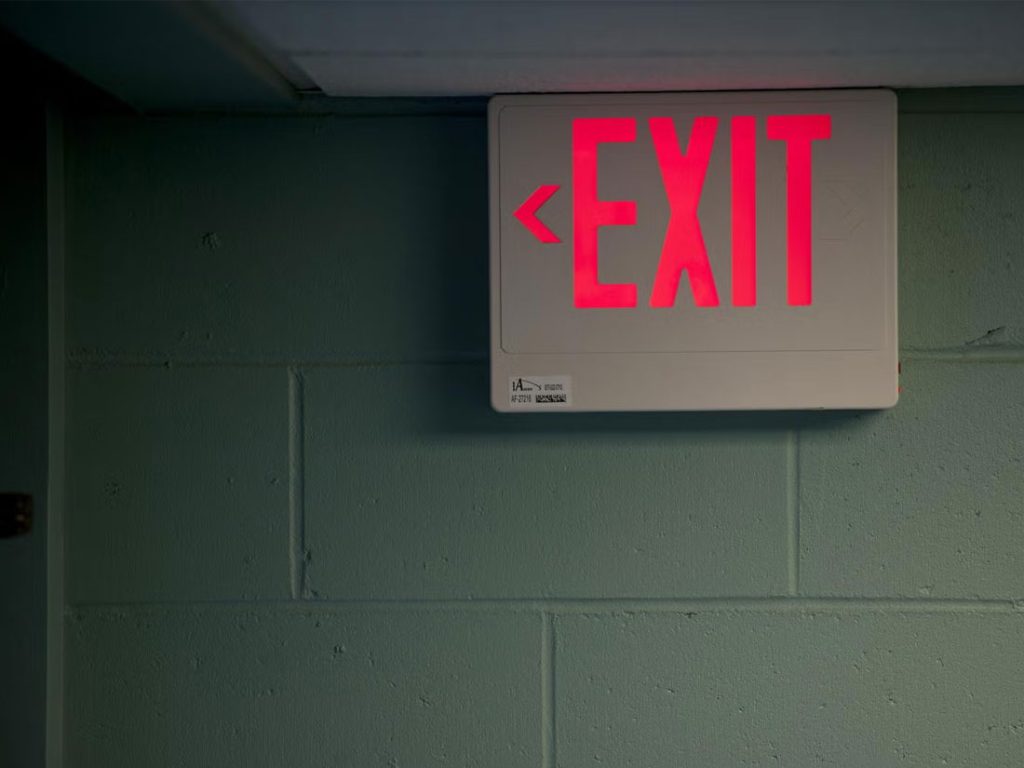Ensure the safety and regulatory compliance of your premises with our comprehensive emergency lighting services. We specialize in maintaining and optimizing emergency lighting systems for diverse industries.
Importance of Emergency Lighting Systems for Safety
1. Legal and Regulatory Compliance in NSW
In New South Wales, strict regulations govern the installation, maintenance, and testing of emergency lighting systems.

These regulations are designed to ensure that systems are correctly installed, fully functional, and capable of performing as intended during an emergency. Adhering to these regulations is not just a matter of legal compliance; it’s a moral responsibility to protect the lives of building occupants.
2. Minimizing Panic and Ensuring Safe Evacuation
Emergency lighting provides a calming visual cue, establishing a sense of order amidst the crisis. These systems clearly demarcate escape routes, highlight emergency exits, and illuminate potential hazards, enabling occupants to move quickly and efficiently.
3. Protecting Vulnerable Occupants
Certain populations within a building, such as the elderly, individuals with disabilities, and children, are particularly vulnerable during emergencies. Their ability to navigate darkened and potentially obstructed evacuation routes may be significantly impaired. Emergency lighting systems play a critical role in ensuring their safety and facilitating their prompt evacuation.
Types of Emergency Lighting Systems Available in New South Wales
1. Standalone Emergency Lights
Standalone emergency lights are self-contained units that operate independently of the building’s main power supply.

Each unit contains its own battery, charger, and light source. When the main power fails, the unit automatically switches on, providing localized illumination. This independence makes them a reliable option for smaller buildings or areas where a centralized system may not be feasible. Also, battery has to be routinely checked to make sure it is working during the emergency. To do that, the lights have to be tested on a monthly.
2. Central Battery Systems
Central battery systems utilize a centralized battery bank to power multiple emergency lighting fixtures throughout a building. This centralized approach offers several advantages over standalone units, including simplified maintenance, enhanced reliability, and greater control. With a central battery system, all emergency lighting fixtures are powered from a single source, which eliminates the need to maintain individual batteries for each fixture.
3. Emergency Exit Signs
Emergency exit signs are essential components of any emergency lighting system. These signs clearly indicate the location of emergency exits, guiding occupants to safety during an evacuation.
4. Smart Emergency Lighting Systems
Smart emergency lighting systems incorporate advanced technologies such as sensors, wireless communication, and cloud-based monitoring to enhance performance and efficiency. These systems offer real-time monitoring of each lighting fixture, providing instant alerts of any issues or failures.
Electrasync: Professional Installation of Emergency Lighting Systems
Proper installation of emergency lighting systems is critical for ensuring their reliability and effectiveness. Electrasync, with its expertise and experience in electrical and fire safety, is a trusted provider of professional installation services in New South Wales.

Electrasync guarantees that systems are installed correctly, comply with all relevant regulations, and perform optimally during emergencies. Electrasync helps building owners and managers navigate the complexities of emergency lighting and create a safe and compliant environment.


 0422 28 70 04
0422 28 70 04 Free Quote
Free Quote
Request A Quote